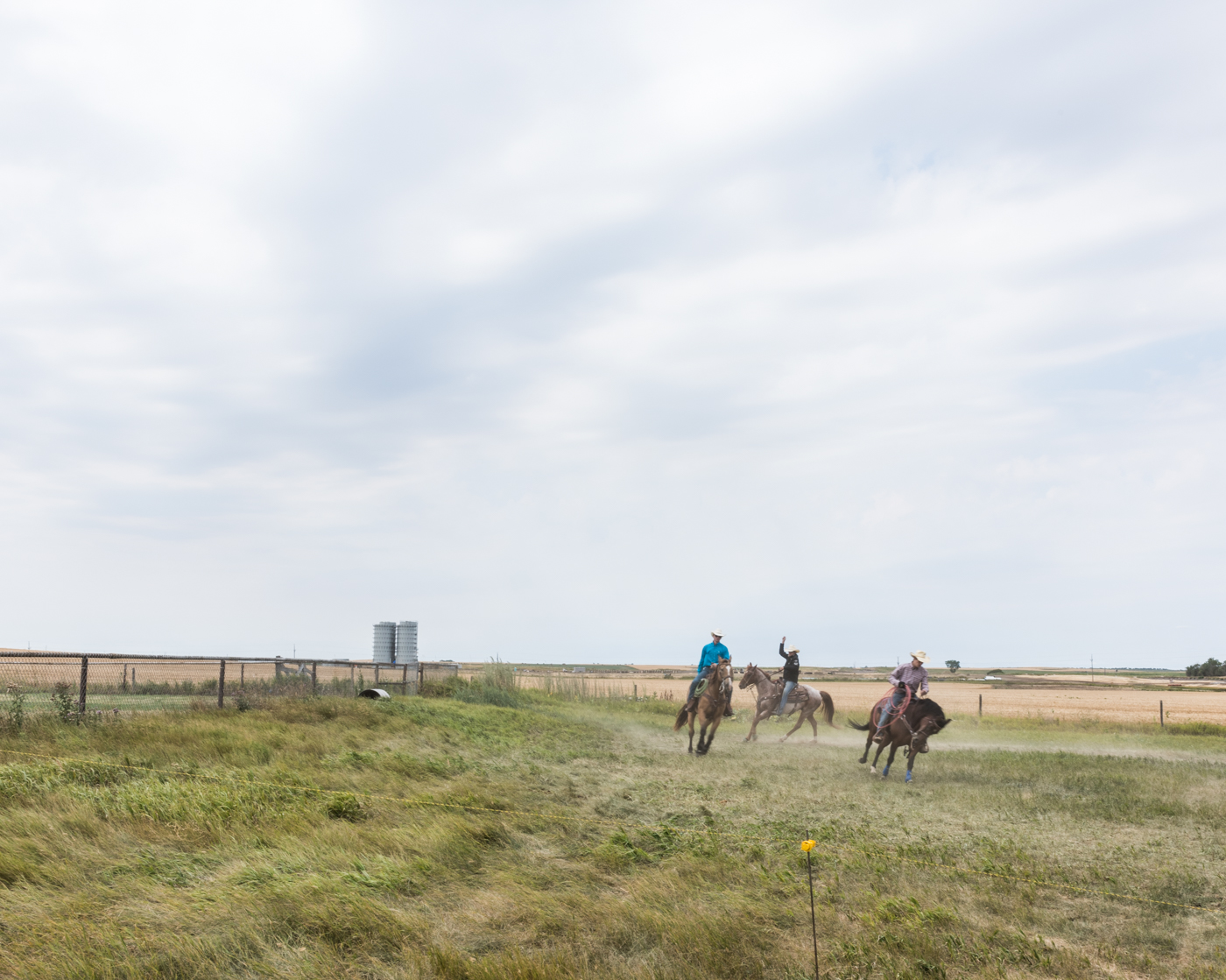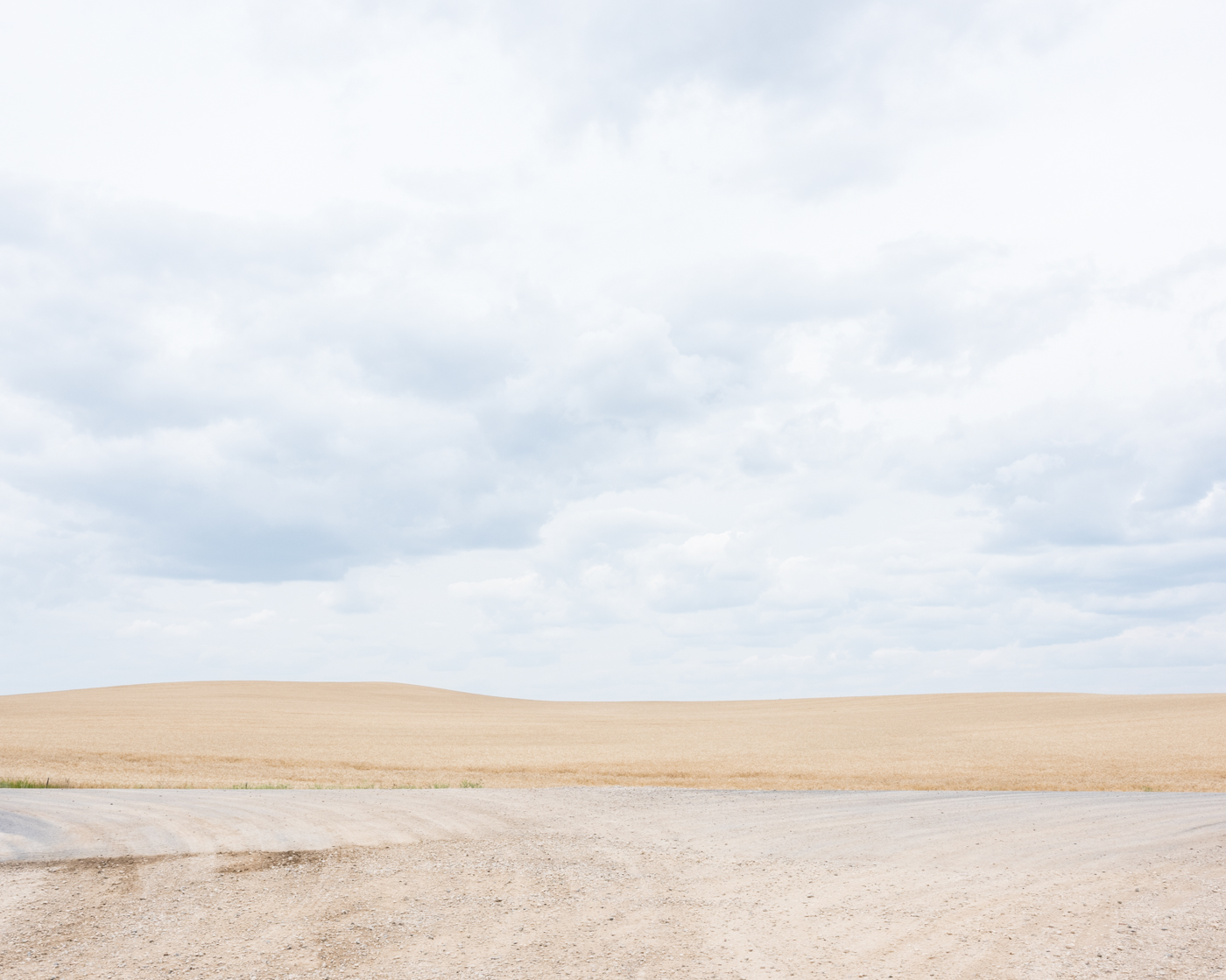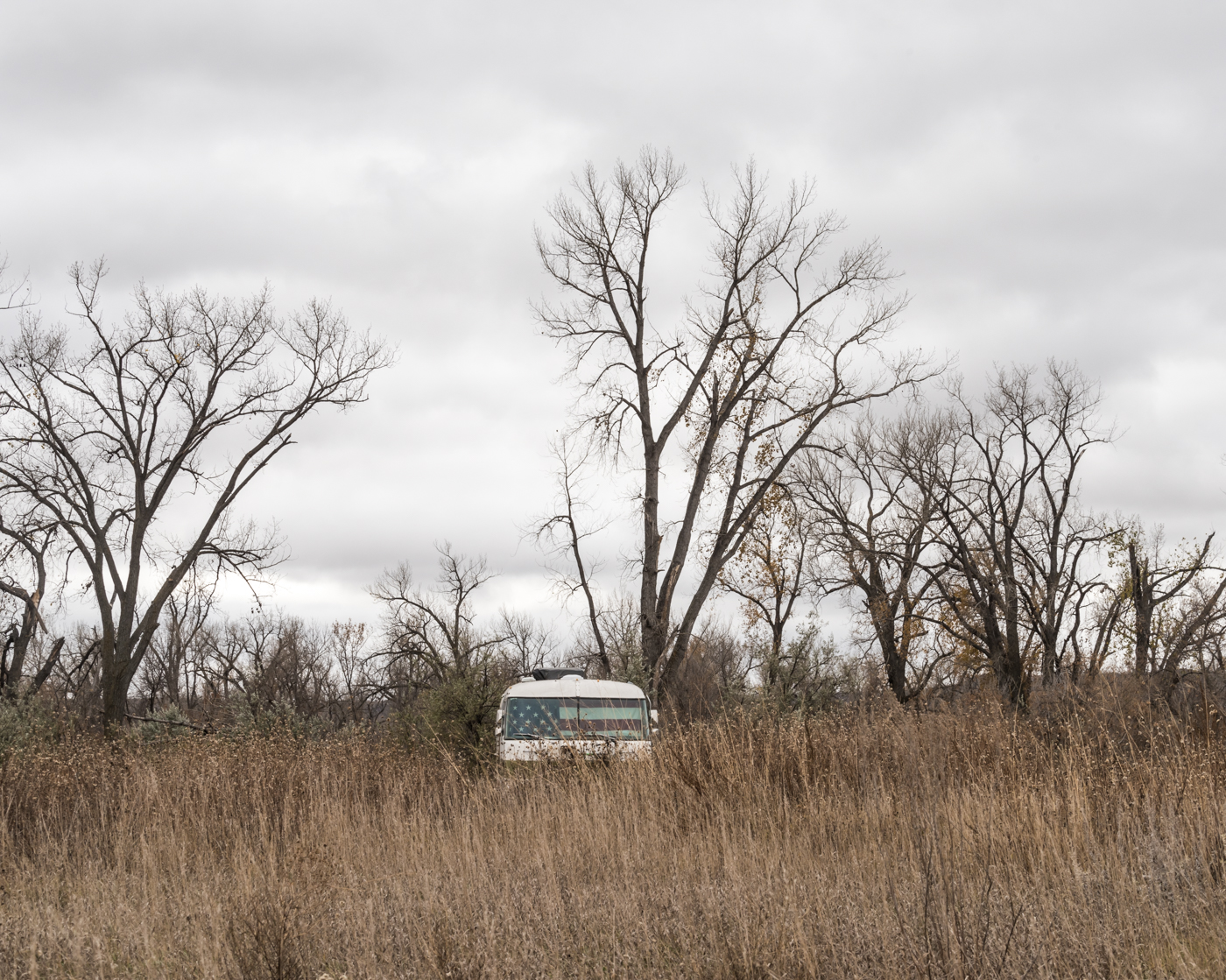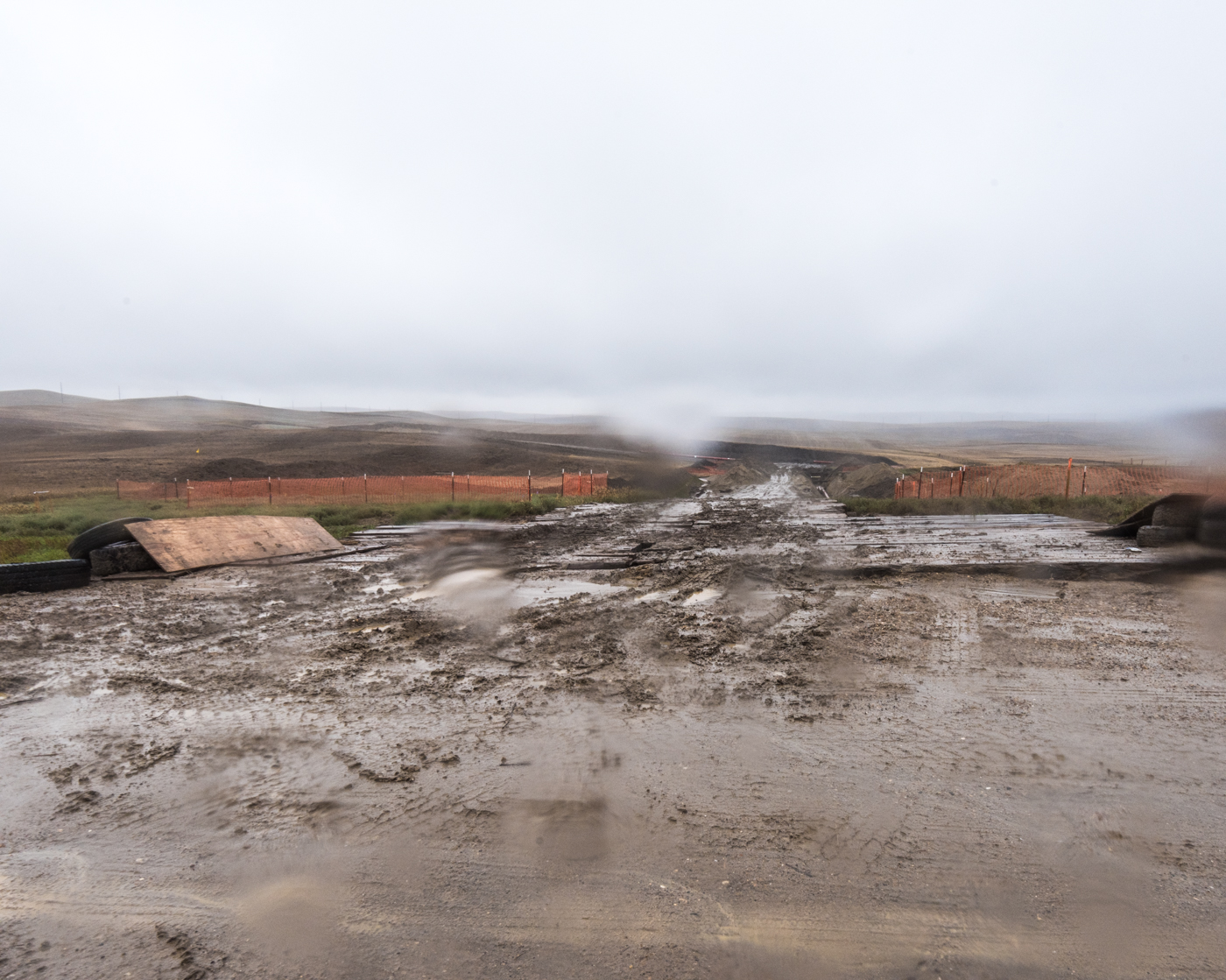






Artist's Statement
Meghan Kirkwood
This series explores the evolution of a production landscape: the Bakken region of western North Dakota. In response to new developments in hydraulic fracturing and horizontal drilling technologies this remote area filled with large ranches and national parks experienced one of the largest natural resource development booms in the twenty-first century. The rapid rate of oil and natural gas extraction led to the construction of the Dakota Access Pipeline (DAPL), which garnered national and international attention as a result of protests from members of the Standing Rock Sioux tribe and numerous Native and Non-Native supporters.
J.B. Jackson’s describes a landscape as “a ‘synthetic’ space, a man-made system of spaces superimposed on the face of the land, functioning and evolving...a composition of man-modified spaces to serve as infrastructure or background for our collective existence.” The Bakken region has been developed for maximum agricultural and energy production since the late nineteenth-century. During most recent boom, however, oil and gas companies reshaped the landscape at unprecedented scale. New roads, well-pads, and unfinished housing developments now stand in place of open fields, and hundreds of miles of new pipelines -- including large stretches of the 1,172 mile Dakota Access Pipeline -- are now etched into native rangelands. For many long-time residents, the region has changed beyond recognition.
These photographs explore this growth within the context of a land set aside for resource development. The series asks what it means to show the impacts of small and large changes -- dust, traffic, pipeline construction -- that combine to transform a landscape, a region, and a home. Further, it seeks to add context to public discussion about natural resource extraction in the United States by visualizing which places bear the costs of oil and natural gas development.


